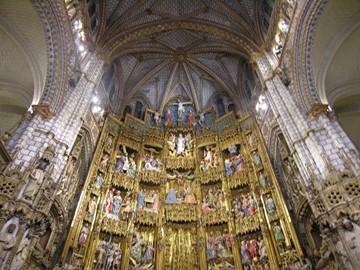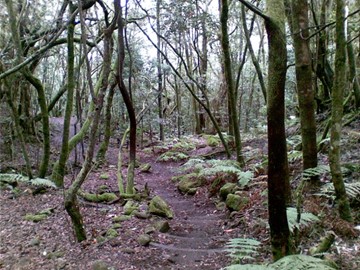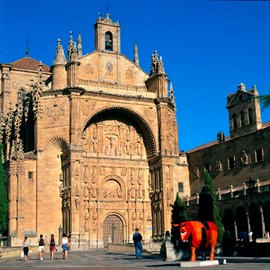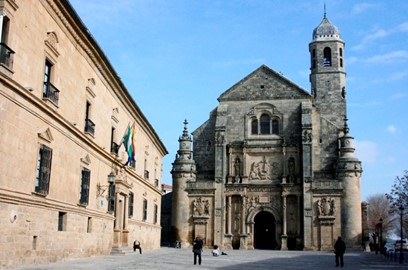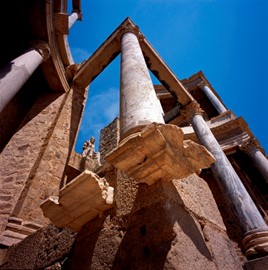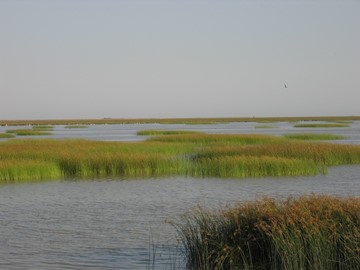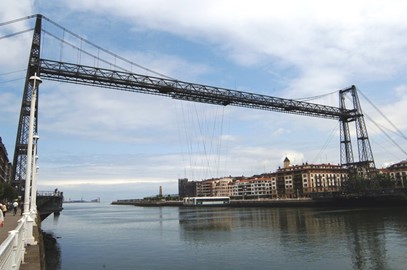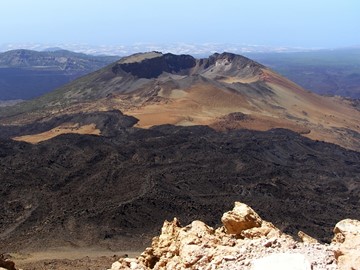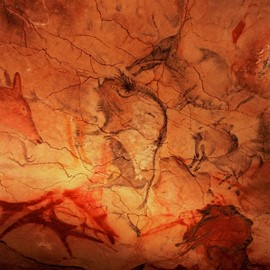region :: europe and north america
Toledo
Toledo, a UNESCO World Heritage site in Spain, is a historic city renowned for its rich cultural and architectural legacy. It showcases a unique blend of Christian and Jewish influences, evident in landmarks like the Gothic Cathedral of Saint Mary and the Synagogue of Santa María la Blanca. Its medieval streets, winding through a fortified hilltop, preserve centuries of history, from Roman origins to its prominence during the Visigothic and Moorish periods. Toledo remains a captivating testament to Spain’s ... Read More
Garajonay
Garajonay National Park, a UNESCO World Heritage site in Spain, is renowned for its lush laurel forests, a rare remnant of ancient subtropical ecosystems. Located on La Gomera in the Canary Islands, it boasts diverse flora and fauna, dramatic volcanic landscapes, and misty trails that attract hikers and nature enthusiasts. The park’s unique ecological significance and well-preserved natural beauty make it a global treasure.
Salamanca
The Old City of Salamanca, a UNESCO World Heritage site in Spain, is renowned for its well-preserved historic architecture and cultural significance. This ancient university city boasts stunning examples of Romanesque, Gothic, Moorish, and Baroque styles, most notably in its grand Plaza Mayor and the intricate sandstone facades of its cathedral and university buildings. As one of Europe’s oldest academic centers, it has long been a hub of intellectual and artistic achievement, attracting scholars and visito... Read More
Ibiza
Ibiza, a UNESCO World Heritage site in Spain, is renowned for its rich biodiversity and vibrant cultural heritage. The island features unique ecosystems, including Posidonia oceanica seagrass meadows, which support diverse marine life and contribute to its ecological significance. Its cultural landscape reflects a blend of Phoenician, Roman, and medieval influences, evident in historic fortifications, archaeological sites, and traditional practices that have shaped its identity over centuries. This combinat... Read More
Poblet Monastery
Poblet Monastery, a UNESCO World Heritage site in Spain, is a well-preserved Cistercian monastery founded in 1150. It served as a royal pantheon for the kings of Aragon, housing their tombs, and exemplifies medieval monastic architecture with its Gothic cloister, Romanesque church, and fortified walls. The site reflects the spiritual and political significance of the Cistercian order, offering insight into its historical influence. Today, it remains an active monastery and a key cultural landmark.
Úbeda and Baeza
Úbeda and Baeza, recognized as a UNESCO World Heritage site in Spain, are two historic towns renowned for their exceptional Renaissance architecture and urban planning. Úbeda boasts impressive monuments like the Sacra Capilla del Salvador and the Palacio de las Cadenas, reflecting the wealth and influence of its 16th-century nobility. Baeza, equally captivating, features landmarks such as the Baeza Cathedral and the Jabalquinto Palace, showcasing a blend of Gothic, Renaissance, and Plateresque styles. Toget... Read More
Mérida
The Archaeological Ensemble of Mérida, a UNESCO World Heritage site in Spain, showcases an impressive collection of Roman ruins from the ancient city of Emerita Augusta, founded in 25 BC. This well-preserved site includes a grand theater, amphitheater, temples, aqueducts, and bridges, reflecting the architectural and engineering prowess of the Roman Empire. It offers a glimpse into the daily life, culture, and governance of a provincial Roman capital, making it a significant historical and archaeological tr... Read More
Santa María de Guadalupe
The Royal Monastery of Santa María de Guadalupe, a UNESCO World Heritage site in Spain, is a historic architectural complex renowned for its cultural and religious significance. Founded in the 13th century, it blends Gothic, Mudéjar, Renaissance, and Baroque styles, reflecting centuries of artistic evolution. The monastery is celebrated for housing the revered statue of the Virgin of Guadalupe, a key symbol in Spanish history and Catholicism. Its well-preserved cloisters, church, and museum make it a remark... Read More
Doñana
Doñana National Park, a UNESCO World Heritage site in Spain, is a vital biodiversity hotspot renowned for its diverse ecosystems, including marshes, dunes, and forests. It serves as a critical habitat for numerous species, such as the Iberian lynx and migratory birds, while also supporting unique flora. The park’s ecological significance and natural beauty make it a key conservation area and a testament to Spain’s rich environmental heritage.
Cuenca
The Historic Walled Town of Cuenca, a UNESCO World Heritage site in Spain, is a remarkably well-preserved medieval fortified city perched atop a steep promontory. Its cobblestone streets, Gothic cathedral, and iconic 'hanging houses' clinging to cliff edges exemplify a harmonious blend of architecture and natural landscape, showcasing centuries of history from its Moorish origins to Christian reconquest. The town's defensive walls, once protecting it from invaders, now enclose a cultural treasure recognized... Read More
La Lonja de la Seda de Valencia
La Lonja de la Seda de Valencia, a UNESCO World Heritage site in Spain, is a masterpiece of late Gothic architecture built between 1482 and 1533. This historic silk exchange showcases intricate stonework, including twisted columns and gargoyles, reflecting its original purpose as a thriving center for trade and commerce. The main hall, with its soaring vaulted ceiling, and the adjacent pavilion highlight the wealth and artistic sophistication of the era. Today, it stands as a testament to Valencia's economi... Read More
Las Médulas
Las Médulas, a UNESCO World Heritage site in Spain, is an ancient Roman gold-mining landscape renowned for its dramatic terrain and historical significance. Formed by innovative hydraulic mining techniques, the site features rugged red cliffs, deep valleys, and a network of channels that showcase the Romans' advanced engineering skills. Abandoned after the 3rd century, it now stands as a testament to the environmental and cultural impact of Roman industry, offering visitors a glimpse into one of the largest... Read More
Yuso and Suso Monasteries
The Yuso and Suso Monasteries, recognized as a UNESCO World Heritage site, are two historic Christian monasteries renowned for their cultural and historical significance. Suso, the older of the pair, dates back to the 6th century and is celebrated as the birthplace of the written Spanish language, evidenced by early manuscripts. Yuso, established later in the 11th century and expanded over time, showcases a blend of architectural styles and houses a remarkable library of ancient texts. Together, they repres... Read More
Rock Art of the Mediterranean Basin
The Rock Art of the Mediterranean Basin, a UNESCO World Heritage site in Spain, features prehistoric paintings and engravings dating back to around 8000 BCE. Created by hunter-gatherer communities, these artworks depict human figures, animals, and hunting scenes, offering a glimpse into their daily lives and beliefs. The art, found across numerous rock shelters and caves, is remarkably preserved and showcases a variety of styles and techniques. This collection stands as a significant testament to early huma... Read More
Tárraco
The Archaeological Ensemble of Tárraco, a UNESCO World Heritage site, showcases the ancient Roman city’s monumental remains, including a well-preserved amphitheater, circus, and a provincial forum. These structures reflect Tárraco’s significance as a political and cultural hub of the Roman Empire, featuring impressive engineering and architectural designs from the 2nd century BCE onward. The site also includes a Roman aqueduct and a necropolis, offering insights into Roman urban planning and daily life. Thi... Read More
Alcalá de Henares
Alcalá de Henares, a UNESCO World Heritage site in Spain, is a historic city renowned for its rich cultural and intellectual legacy. It is the birthplace of Miguel de Cervantes, author of Don Quixote, and home to one of Europe’s oldest universities, founded in 1293 by Cardinal Cisneros. The city’s well-preserved architecture, including its Renaissance and Baroque buildings, reflects its significance as a center of learning and religion during the Spanish Golden Age. Today, it stands as a testament to Spain’... Read More
San Cristóbal de La Laguna
San Cristóbal de La Laguna, a UNESCO World Heritage site in Spain, is a historic city founded in the late 15th century, renowned for its well-preserved colonial architecture and urban layout. It served as a model for many colonial cities in the Americas, featuring a grid pattern with vibrant streets, churches, and convents. The city’s cultural significance is highlighted by its rich history as the former capital of Tenerife and its blend of European and indigenous influences. Today, it stands as a testament... Read More
Palmeral of Elche
The Palmeral of Elche, a UNESCO World Heritage site in Spain, is a remarkable historic landscape featuring an extensive grove of date palms. Established during the Islamic period between the 7th and 10th centuries, it showcases an intricate irrigation system that has sustained the palm groves for centuries, reflecting advanced agricultural practices of the time. This oasis-like setting also includes traditional huertos (garden plots) and is celebrated for its cultural and botanical significance, offering a ... Read More
Roman Walls of Lugo
The Roman Walls of Lugo, a UNESCO World Heritage site in Spain, are an exceptionally well-preserved example of Roman military architecture from the 3rd century AD. Constructed under Emperor Augustus, these fortifications stretch over 2 kilometers, featuring 85 semicircular towers and multiple gates, built with slate and granite. Originally designed to protect the Roman city of Lucus Augusti, the walls remain largely intact, offering a unique glimpse into ancient engineering and urban planning. Today, they s... Read More
Vall de Boí
Vall de Boí, a UNESCO World Heritage site in Spain, is renowned for its exceptional collection of Romanesque churches dating back to the 11th and 12th centuries. These well-preserved structures, including notable examples like Sant Climent de Taüll and Santa Maria de Taüll, showcase stunning architecture and intricate frescoes that reflect the region's medieval cultural and religious significance. The site’s historical importance and artistic value make it a remarkable testament to Catalonia’s Romanesque he... Read More
Atapuerca
The Archaeological Site of Atapuerca, a UNESCO World Heritage site in Spain, is renowned for its exceptional prehistoric findings, offering critical insights into early human evolution. Excavations have uncovered fossils and tools dating back over a million years, including remains of some of the earliest known hominins in Western Europe. The site's well-preserved evidence has significantly advanced scientific understanding of human ancestry and prehistoric life.
Aranjuez
The Aranjuez Cultural Landscape, a UNESCO World Heritage site, is a remarkable example of a human-shaped environment blending nature and culture. It features an intricate network of historic gardens, orchards, and waterways, alongside elegant palaces and architectural treasures, reflecting centuries of royal influence and innovative land management. This harmonious fusion of Baroque and Renaissance styles with the surrounding natural beauty showcases a unique legacy of artistic and environmental planning. I... Read More
Vizcaya Bridge
The Vizcaya Bridge, a UNESCO World Heritage site in Spain, is an iconic transporter bridge completed in 1893, designed by architect Alberto de Palacio. It stands as a remarkable feat of industrial engineering, blending iron construction with innovative technology to ferry passengers and vehicles across the river via a suspended gondola. Recognized for its historical and architectural significance, it symbolizes the ingenuity of the late 19th century and remains operational today.
Teide
Teide National Park, a UNESCO World Heritage site in Spain, is renowned for its stunning volcanic landscape, dominated by Mount Teide, the country’s highest peak. The park features dramatic lava fields, unique rock formations, and a diverse range of endemic flora and fauna adapted to its high-altitude environment. Its geological significance and breathtaking scenery make it a globally recognized natural treasure, attracting visitors for hiking, stargazing, and scientific exploration.
Altamira Cave
Altamira Cave, a UNESCO World Heritage site in Spain, is renowned for its prehistoric rock art, dating back to the Upper Paleolithic period, approximately 36,000 to 13,000 years ago. Discovered in 1868, the cave features remarkable polychrome paintings and engravings of bison, horses, and other animals, created using charcoal, ochre, and natural contours of the rock. Often called the 'Sistine Chapel of Prehistoric Art,' it provides invaluable insight into early human creativity and culture. Due to preservat... Read More
